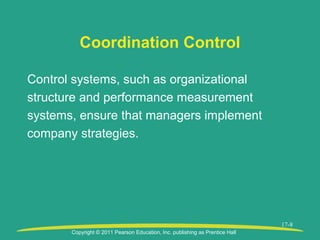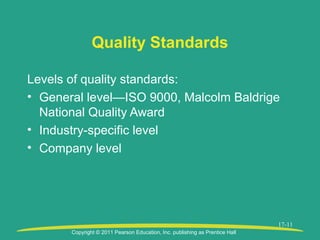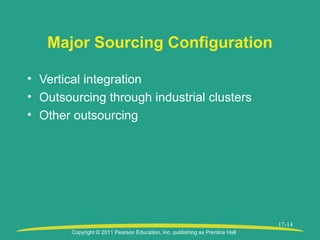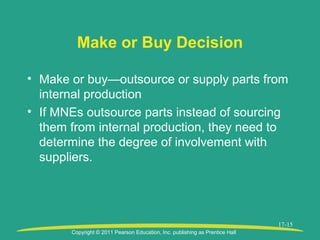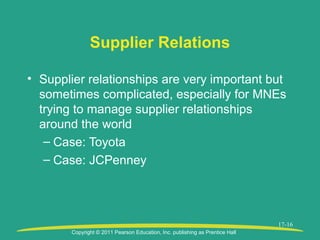This document discusses global manufacturing and supply chain management. It covers key factors in global manufacturing strategies, including compatibility, configuration, coordination and control. It also discusses elements of global supply chain management, such as quality standards, supplier networks, inventory management and transportation. The overall goal is to describe how companies can effectively manage international operations through strategic global manufacturing and supply chain coordination.







